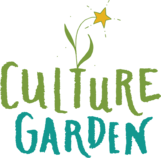Reflection on “Cultural Emergence Leadership Training”
Reflections Cultural Emergence Leadership Training (CELT)
with Jon Young & Looby MacNamara @ Applewood Farm, North Herefordshire
How did embodiment play a role in the culture and organizing systems of the workshop?
Jon describes his work as being founded in Connection Modelling (as opposed to Educational or other Modelling). “Connection” is fundamentally a felt-sense experience – a feeling, created through our human interactions, that the totality of our lived experience is welcomed, received, and engaged with by others – and he cultivated it within the program in several ways. First, I observed that, as a facilitator, he provided frequent opportunities for participants to share from their hearts and to be witnessed and heard by the whole. Occasionally, he would respond to a participant’s sharing with a related story from his own life experience that somehow also conveyed a piece of what he was teaching. This formed the primary structure of the course; in this way, the content or material being conveyed was woven in with and built upon Jon’s and the participant’s contributions, pulling the many tributaries of personal experience into a shared collective flow.
“Our body/beings were able to experience safety at a deep level and to physiologically unwind.”
Second, the way the group activities were structured reflected an understanding that, in order to freely connect with one another, humans must feel held by a basket of culture, by a matrix of clearly understood roles, norms, and expectations. Furthermore, these roles must somehow orient – and in turn, orient participants -- towards a “bigger picture” that is meaningful and life-giving. For the duration of our five days together, each participant was given practical tasks to fulfill that related to qualities of one of the eight cardinal and ordinal directions (North, North-East, East, South-East, etc). Each directional quality was anchored by a felt-sense relationship to the rhythms of the day: the East, for example, embodies the warmth and promise of the rising sun. Camp tasks that related to the East involved welcoming people and calling people to attend meetings. Having clear roles, and having those roles be understandable and meaningful on the basis of a felt-sense relationship to the Natural world and its rhythms, met a psychological and physiological need. Our body/beings were able to experience safety at a deep level and to physiologically unwind. It was as though a whole lot of background noise disappeared, and we arrived simply in the present moment: oriented, settled, and available to connect.
In my private practice of Somatic Psychotherapy, when working with clients who have a lot of overwhelm or emotional pain in their being, I will sometimes help them begin to tolerate their experience by locating places in their body/being that feel “ok” in some way. Often, the location and the nature of this “ok” place is a surprise; for example, a person might discover, when scanning his body/being, that the top of his scalp feels “spacious”. This may be unexpected, but it is also potentially helpful: he might find that, when he concentrates his attention on this place, the rest of his body/being orients towards that “ok” sensation and subtly relaxes. Over time, repeating this exercise, he might find that he is better able to tolerate painful inner experiences because his body/being knows that it has islands of respite (accessible by a mere shift in attention) that will help it to bear the burden. In a way, the eight cardinal and ordinal directions and their felt-sense qualities (as conveyed by Jon) provide similar islands of respite at the collective level of culture. Amid the background static of disorientation, suffering, and overwhelm that is so common in the West (and other places too, I’m sure!) the directions offer eight different flavours of “ok” (the brightness of the East, the active exertion of the South-East, the calm focus of the South, etc.) which, when they become daily points of focus for a community of people, support painful experiences in the collective field to be felt, honored, and moved, thereby increasing the wellbeing and resilience of the whole.
“... We held ceremony to honor this expression, understanding it as a vital part of our collective process ...”
This certainly played out in our group over the course of the workshop. In particular, many of us felt grief deep bubbling up to be expressed. We held ceremony to honor this expression, understanding it as a vital part of our collective process, and a way we could allow old patterns and hurt to be released to make way for the new. Perhaps because being immersed in such a connective field reminded each of us of the ways we have been hurt by disconnection in our lives, or perhaps because we were anchored and oriented sufficiently to feel safe going into whatever hurt we carried, we gratefully took the opportunity to weep, to wail, to cry and to be held and witnessed.
When is the last time you were able to experience safety at a deep level and physiologically unwind?
Does you community, organisation or enterprise invite this level of trust, safety and vulnerability?
